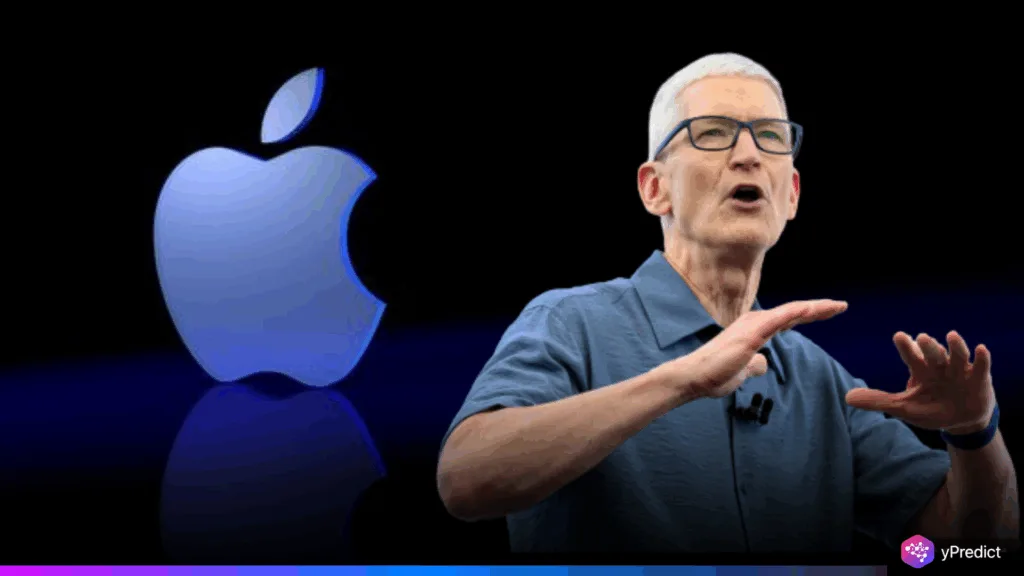
The AI boom is racing ahead, but Apple is choosing patience over speed. While Google, Microsoft, and OpenAI flood their products with artificial intelligence, Apple has taken a slower path. It announced “Apple Intelligence” in 2025, but most users won’t experience it until 2026.
That delay might seem risky in a tech world that rewards fast launches. But Apple has a track record of waiting until the timing, technology, and user experience align. Its Apple AI strategy isn’t about grabbing headlines today. It’s about avoiding the backlash from buggy tools tomorrow.
Apple Intelligence Won’t Arrive Anytime Soon
At the 2025 WWDC event, Apple introduced a range of AI features under the name “Apple Intelligence.” These include improved Siri capabilities, smarter app suggestions, and enhanced writing tools. But access to these features remains limited. Only beta users in the US with the latest devices can try them.
Reports suggest the general AI rollout delay could extend well into 2026. Even early iOS 18 updates might not include these tools for most users. That puts Apple far behind its competitors, at least on paper.
Why Apple Is Avoiding the AI Speed Trap
OpenAI has released GPT-4o. Google has built Gemini into Android. Microsoft has embedded Copilot across Windows and Office. So why isn’t Apple following suit?
The company values stability and trust over rapid releases. Apple rarely ships features that are incomplete or poorly tested. Its Apple AI strategy is built on the belief that rolling out bad software does more damage than launching late.
Other Tech Giants Are Rushing and Failing
Competitors are making headlines with fast AI launches, but not all of them are positive. Microsoft’s Copilot often delivers incorrect results. ChatGPT still hallucinates facts. Claude and Gemini look promising but struggle with consistency.
Users and developers report that AI tools help with small tasks but fall apart under real pressure. Tools that promise to write full code or manage projects usually create more work instead. This raises real concerns about AI product quality.
Apple Wants to Learn From Everyone Else’s Mistakes
Apple isn’t just cautious, it’s strategic. The company is watching what works and what fails. By delaying its AI rollout, Apple avoids the public criticism and user frustration plaguing other companies.
If competitors burn through cash on flawed tools, Apple benefits by staying out of the fire. If the AI hype bubble bursts, Apple can say it never fully bought in.
Timing Matters More Than Hype for Apple
Apple has pulled this move before. It didn’t rush into wearables but still dominated the smartwatch market. It wasn’t the first to build tablets but set the industry standard once it did.
With AI, Apple may repeat that pattern. Let others stumble, then step in with a refined product. The Apple AI strategy is to let the hype wave pass and deliver a stable, long-term solution that users can trust.
Apple Doesn’t Need to Chase Relevance
One reason Apple can wait is because it already controls the ecosystem. It owns the hardware, the operating system, and the App Store. That gives it the luxury to wait.
Apple doesn’t need to push broken tools just to stay in the spotlight. Instead, it’s using this time to build AI that aligns with its reputation for quality. When Apple finally launches its AI suite, expectations will be high, but so will the polish.
Getting It Right Matters More Than Being First
If Apple’s slow pace leads to AI tools that are stable, secure, and useful, users will reward that decision. As consumers grow tired of unreliable AI, Apple’s patience could look like brilliance.
In a world full of AI failures and rushed rollouts, Apple’s approach stands out. Sometimes, the smartest move isn’t to move first, it’s to move wisely.






